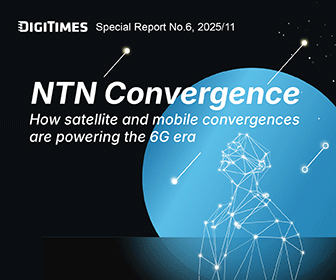Many people are still unfamiliar with the NTN (non-terrestrial network), including myself. I recently learnt something from a briefing by an analyst from DIGITIMES Research about the business model and technical specifications of NTN: Now I'm aware that it refers to capturing network services in inaccessible areas like oceans, deserts and mountains.
The US hit Huawei hard and imposed sanctions on its 5G equipment two years ago. The IT community suggests that the trade ban is apparently a strategic countermeasure to curb 5G development of China, since the US is lagging behind China in 5G but cannot afford to lose. But the US is by no means a languid player. A lot of references and meeting records show that top enterprises and the US government are working closely together with strong patriotic overtones. They also call friends and partners to jointly define the next-generation industry standards. We can expect that 6G is bound to come into place before 2030, which is the way to prove that the US still reigns supreme!
According to the 17th edition of 5G's technical specifications released by the 3GPP (The 3rd Generation Partnership Project), the NTN architecture covers satellite networks, high-altitude platforms (HAPs), air-to-ground networks, unmanned aerial vehicles (UAVs). 3GPP incorporates applications covering wildlands, oceans, rural areas into the scope of NTN. In fact, NTN in a wide sense includes unmanned aerial vehicles, thus the area applied would span to the urban areas. Under the concept of technology sharing, the general NTN including all aviation carriers should go beyond suburbs and wildland. For instance, the drone aplications for smart city should be taken into account.
Satellite networks include LEO (low Earth orbiting), MEO (medium Earth orbiting), GEO (geosynchronous Earth orbiting), defined in terms of different distances from the earth surface. HAPs are base stations complying with IMT standards to be deployed on aircraft, balloons or airships. Air-to-ground networks aim to provide in-flight connectivity services for aircraft by utilizing ground stations.
These are the core topics of the next-generation communication standards. To be frank, I didn't quite follow the whole new technology during the briefing. But I paid close attention and took notes, and I should be able to learn more gradually in the future and come to realize the core issue. Since I have taken notes, I'm more than happy to share with our readers.






